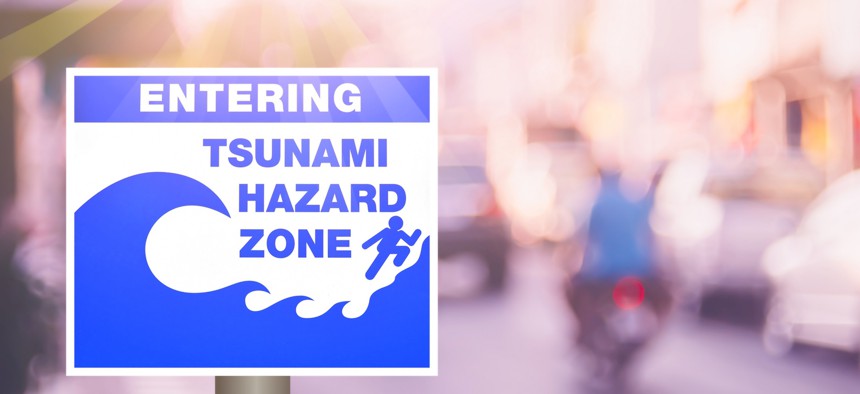NASA puts error data to use to speed up tsunami detection

NASA officials want to use GPS satellites to track ionospheric anomalies that could signal developing tsunamis. Tonktiti / Getty Images
The nation’s space agency is leveraging emerging technologies that could potentially provide up to an hour of advance notice of an incoming tsunami to coastal communities.
NASA scientists have turned to emerging technologies and global navigational satellite systems as part of an experimental effort to augment early warning systems that can help detect tsunamis from space, according to a recent announcement.
The space agency said this week that its researchers are launching a new effort to improve real-time positional accuracy down to a few inches when monitoring for signals of a tsunami emerging virtually anywhere on the planet.
Tsunamis span miles across the ocean's surface and displace significant amounts of air as they take shape, researchers have found, which cause gravity waves and vibrations that can be felt within minutes in the topmost layer of the atmosphere.
The new effort employs an experimental monitoring system called the GNSS Upper Atmospheric Real-time Disaster Information and Alert Network, otherwise known as GUARDIAN, which tracks data from GPS and other wayfinding satellites across the globe.
While most GPS systems typically seek to correct data impacted by ionospheric anomalies, these fluctuations are instead put to work in real-time by the Jet Propulsion Laboratory, a federally-funded research and development lab.
"Instead of correcting for this as an error, we use it as data to find natural hazards,” Léo Martire, a scientist at JPL developing the GUARDIAN system, said in a statement accompanying the announcement.
Martire is a co-chair for the United Nations' International Committee on GNSS, and said the group is assessing how the system can be used to improve early warning strategies around the world. Though the technology is still in its early stages, NASA said that GUARDIAN's near real-time output "could potentially provide as much as an hour of warning, depending on the distance of the tsunami origin from shore."
Siddharth Krishnamoorthy, a member of the Jet Propulsion Lab's development team, said that the objective of GUARDIAN is for the system to one day complement existing ground and ocean-based instruments, "which are highly effective but lack systematic coverage of the open ocean."
The GUARDIAN development team has focused its initial efforts on the Ring of Fire, a series of underwater volcanoes situated on the edges of the Pacific Ocean, though NASA scientists have already begun implementing ground-based instruments at GNSS station to more rapidly detect tsunami activity, according to the announcement.
The area is responsible for nearly 80% of all confirmed tsunamis from 1900 to 2015, according to data maintained by the National Oceanic and Atmospheric Administration.




